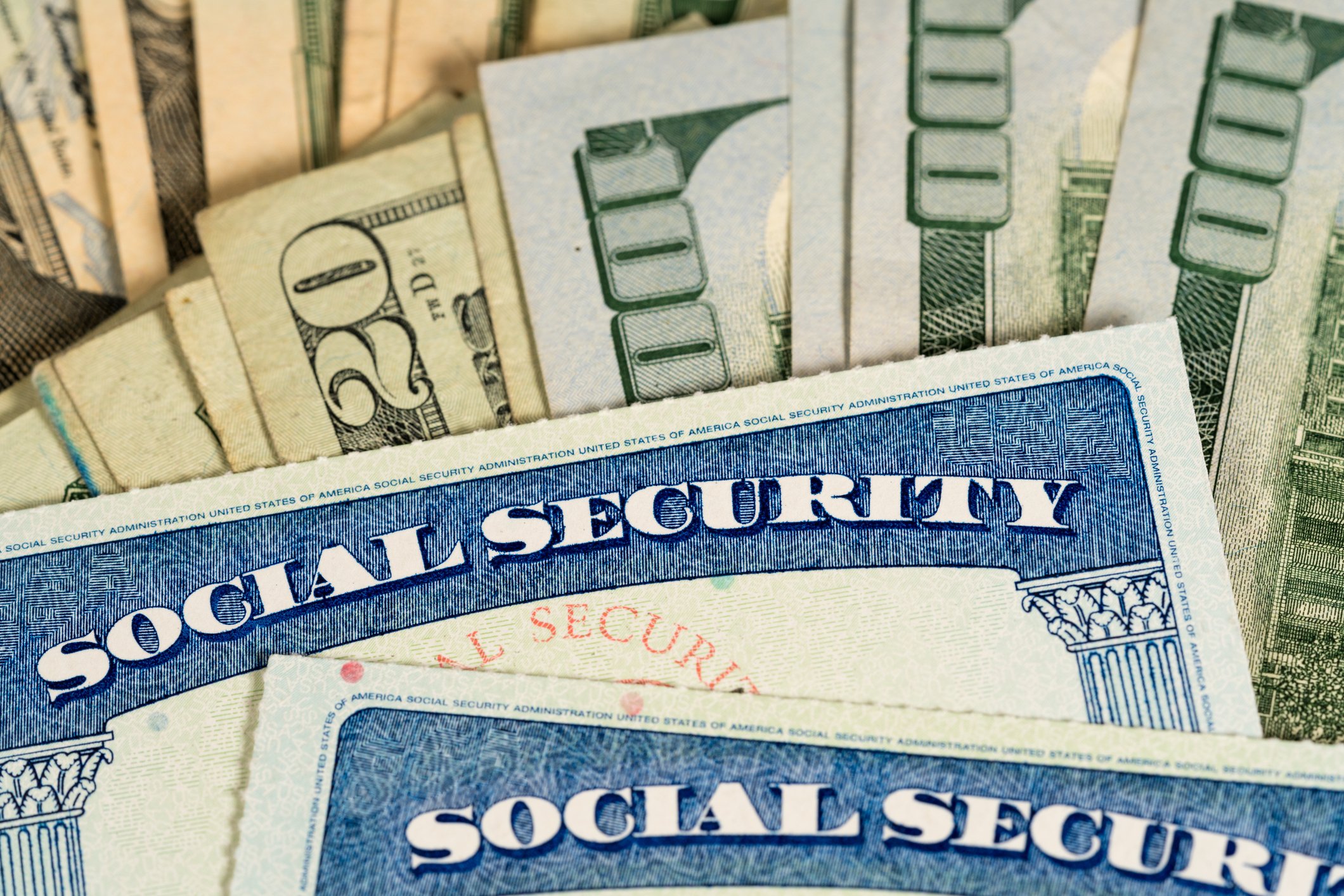Social Security is coming off a pretty big past week. On Oct. 10, the U.S. Bureau of Labor Statistics released its September inflation data, providing the last piece of data needed for the Social Security Administration (SSA) to calculate the cost-of-living-adjustment (COLA) for 2020. We now know that the average retired worker will net about $24 more a month in 2020, working out to a 1.6% COLA.
The SSA also released its "Fact Sheet," which highlights an abundance of changes that'll take place in the year ahead. These changes include a higher payroll tax cap, an increase to the full retirement age, higher retirement earnings test income thresholds, and a beefier maximum monthly payout at full retirement age.

Image source: Getty Images.
Then again, it's been hard for current and future beneficiaries to get excited about these changes given repeated warnings from the annual Board of Trustees report about the Social Security program. This year's report called for a complete exhaustion of Social Security's $2.9 trillion in asset reserves by 2035, as well as an estimated $13.9 trillion cash shortfall between 2035 and 2093. This has a lot of future retirees (especially millennials) on edge as to whether they'll ever see a dime from Social Security.
Thankfully, I have good news (and some bad news) about the Social Security program that bears sharing. Social Security offers beneficiaries one concrete guarantee that should ease the concerns of tens of millions of working Americans and retirees. At the same time, it fails to offer two other assurances that some folks might currently view as guarantees.
Social Security's one guarantee
Despite all the hype and rumors that surround the program's imminent cash shortfall and the potential depletion of its asset reserves (i.e., its aggregate net-cash surpluses since inception), the great news I can offer is there's absolutely zero chance that Social Security will go bankrupt and fail to provide future generations of retirees a benefit.
This guarantee comes courtesy of the fact that two of the three revenue producers for Social Security are recurring sources of income. Last year, Social Security's 12.4% payroll tax on earned income, and the taxation of Social Security benefits, brought in $885.1 billion and $35 billion in respective revenue out of the $1.003 trillion collected. As long as Americans continue to work and earn income, this 12.4% payroll tax, and the taxation of benefits on select recipients, will ensure that money is always flowing into the Social Security program for disbursement to eligible beneficiaries.

Image source: Getty Images.
Thus, even without a dime in the program's asset reserves, Social Security would still be able to distribute collected funds to eligible beneficiaries.
The only way this Social Security guarantee could somehow be undone would be if Congress completely changed how the program is funded. And to be frank, neither Democrats nor Republicans on Capitol Hill would risk losing votes in future elections by disrupting the primary funding mechanism of Social Security.
That's the good news.
Despite popular belief, these Social Security assurances aren't guaranteed
Now on to some news that isn't likely to please readers.
Although Social Security isn't going to go bankrupt or become insolvent, the existing payout schedule isn't guaranteed. The Trustees report alluding to a drawdown of the program's asset reserves is confirmation that the existing payout schedule isn't unsustainable without an infusion of additional revenue and/or cost-cutting. Should Congress fail to act, benefit cuts of up to 23% may await then-current and future retirees in 2035.
Historically, Congress has acted to save beneficiaries from a benefit reduction. However, lawmakers have a history of waiting until the 11th hour before passing legislation, and the current Congress is arguably more politically divided by party lines than ever. That's a problem given that 60 votes in the Senate will be required to pass any Social Security amendments.

Image source: Getty Images.
Secondly, you might be surprised to learn that a Social Security benefit isn't simply given to you because you were born in the United States. Although you're guaranteed a benefit if you're eligible, you first have to become eligible for your benefit -- and that's accomplished by working.
In order to guarantee yourself a Social Security benefit, you'll need to earn 40 lifetime work credits, of which a maximum of four credits can be accrued per year. These credits are earned according to your income in a given year, with the bar to reach these credits set pretty low by the SSA.
Next year, $1,410 in earned income (wages and salary, but not investment income) will equate to one work credit, with $5,640 in earned income maxing out your earned credits for the year. Do that for 10 years, and you'll have turned one of Social Security's nonguarantees into the assurance of a retired worker benefit when you reach eligible claiming age.





